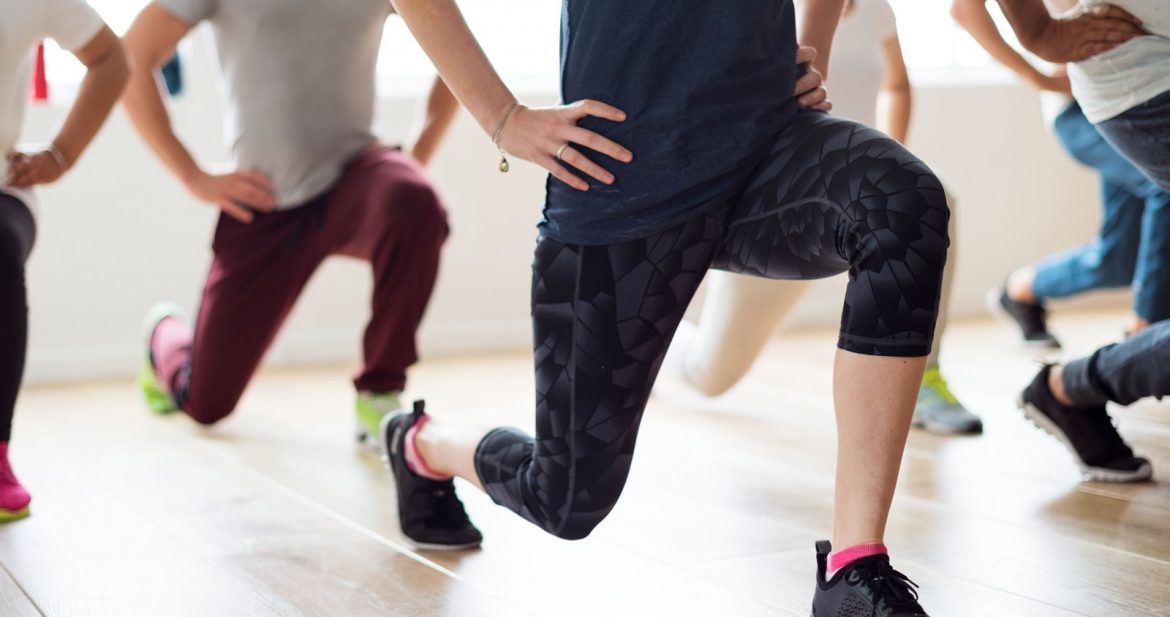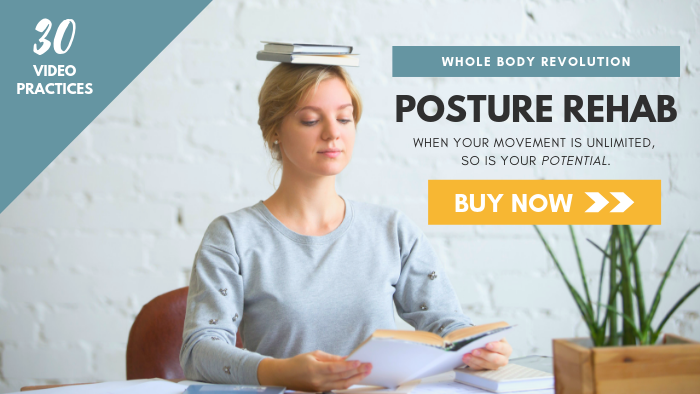Tight Hips – A Modern Day Epidemic
One of the biggest complaints my clients present during their sessions is tight hips. With the high number of professional computer jockeys in today’s modern world, the common complaints are limited range of motion in the hips and shoulders, pain in the neck, back, and feet.
Sitting all day, especially at an ergonomically challenging computer set up, creates a shortening in your hip flexors (the muscles along the front of your hip and thigh that pull you down into a chair). These muscles in turn pull your lumbar spine forward, causing tension and stiffness in the low back, bracing in your hips and what are known as dysfunctional movement patterns.
Additionally, 99.9% of everyone I see in my office sits incorrectly. I attribute this to a lifetime spent on soft, cushy couches and overstuffed easy chairs. Unfortunately, while plush seating may feel nice for a while, it has the effect of rolling your sacrum under so that your weight isn’t centered over your ischial tuberosities (sitting bones) but rather on the last vertebra of your spine (i.e. your sacrum).
Once your sacrum is jammed, your entire spine compensates. This is why a headache or sore neck is actually located in your pelvis, and why work around the hips and low back will generally result in greater shoulder mobility.
7 Easy Tips to Increase Hip Flexibility:
1. When sitting for prolonged periods, make sure your hips are higher than your knees.
If your knees are higher than your hips, all of your weight falls into your pelvis while the job of holding you upright falls to your hip flexors and the postural stabilizers of your low back.
Instead of bracing your torso to stay upright, place your feet flat on the floor, one foot a few inches in front of the other. By pressing into the ground, you should feel support travel up through your legs and into your low back. Taking the strain off your back is the first step in allowing greater mobility.
2. Do squats – full on, all the way to your heels squats!
Squats force you to mobilize your ankles, knees, hips, and the facet joints in your spine. Most people who haven’t ever trained for this kind of movement find even a basic squat with no weight to be challenging.
When performing the maneuver, make sure your torso doesn’t pitch forward. Holding a small weight, a weighted bar, or a wooden dowel in front of your chest, as in a traditional front squat position, can help you stay upright.
If you are not flexible enough to keep your feet relatively parallel, start with your legs wider apart, feet turned out at 45 degrees. The more you practice squatting, the more willing your body will be to go all the way to the ground.
3. Practice sitting down on the ground and getting up without using your hands.
This is especially helpful for lubricating the hip joints, and it erases the fear that people develop as they age that they will fall and not be able to get back up. It has the added bonus of loosening the lateral rotators of the hip – the muscles that are implicated in sciatica.
Start by finding a way to bring yourself to a seated position on the floor, hands free. Then, get up, also without using your hands. Repeat the exercise several times, finding as many different ways to sit down and stand up as you can.
When the exercise becomes too easy, add a weight. Hold 10-25lbs (or more, if you’re comfortable) at chest height while sitting and standing. This not only mobilizes but also strengthens the joints.
4. When choosing a chair for your computer desk set up, select a firm, flat surface over any padded and contoured seats.
Most chairs are designed for an “average” or “standard” body, and anyone who has ever shopped for the perfect pair of jeans knows that one size does not fit all!
Flat surfaces make it easier for you to sit forward on your sitting bones – your ischial tuberosities. You should feel equal weight on both your right and left tuberosities. If not, try to center yourself as best you can without contorting your body. Just relax down onto the chair.
Sitting on your ischial tuberosities is much more stable than sitting on your sacrum. Your postural stabilizing muscles can easily relax and reduce the bracing along your spine, creating instant mobility for your back (this is absolutely key in resolving back and neck pain!).
5. Take extra deep breaths.
With all the stimulus coming at us from all directions – television, internet, books, MP3 players, digital advertising, children, pets…. – it’s easy to forget to breathe.
When you cease breathing deeply, your diaphragm becomes tight. Anatomically, the fascia of your diaphragm connects directly to your hip flexors, so if your diaphragm is constricted, your hip flexors will be, too.
Take time each and every day to lie quietly on your back. Breathe deeply, relaxing your rib cage, spine, and abdominal muscles. Allow your internal organs to rest heavily into your back. As you become more relaxed, direct your breathing down deeper and deeper into your pelvis, relaxing all of the tension in your low back, sacrum, gluteus muscles, and thighs. As you become more skilled at conscious breathing, you can begin to direct your breath all the way out the bottoms of your feet.
6. Practice dynamic joint mobility – taking each hip joint through a series of repetitive movements designed to increase the range of motion.
This kind of movement increases the flow of synovial fluid, which lubricates the joints. It also provides excellent neurological feedback. Range of motion is a use it or lose it proposition; the more your remind your body that you need to be able to make large, open movements, the more willing your nervous system will be to allow you to do just that.
7. Stretch your hip flexors, especially after long car or airplane trips.
As mentioned previously, sitting shortens the anterior muscles of your hip and thigh. To keep them long and limber, stretch daily, or at least several times a week.
Any maneuver that causes a lengthening along the front of your hip and thigh will lengthen the hip flexors. Some of my favorites include lunges (keep your torso upright – do not allow yourself to fall forward over your front knee) and bridges (a full back bend with hands and feet on the floor – modify this to a shoulder bridge if you aren’t quite ready for this pose).
Get Specific
Want me to personally lead you through exercises to improve your hip mobility, get your shoulders back where they belong, free up your neck and generally feel like you’re ten years younger?
Every video in my Posture Rehab video course is led by me with complete, step-by-step instruction. You won’t find these practices anywhere else (i.e. this isn’t your typical physical therapy experience…not by a long shot). Each one is designed to reset your nervous system, increase flexibility and mobilize your joints.


Great post Sukie! People often times can clear up some “knee” or “back” pains with hip opening practice like this.
Yes, absolutely. In fact, “back pain” is rarely rooted in the back. 99% of the time, it’s in the legs and feet, unless there’s been an actual trauma to the spine or ribs. So, opening up the hips and balancing flexors-extensors is key in maintaining a healthy spine.
great post as usual!
Nice post and this post helped me alot in my college assignement. Thanks you for your information.
tnk u